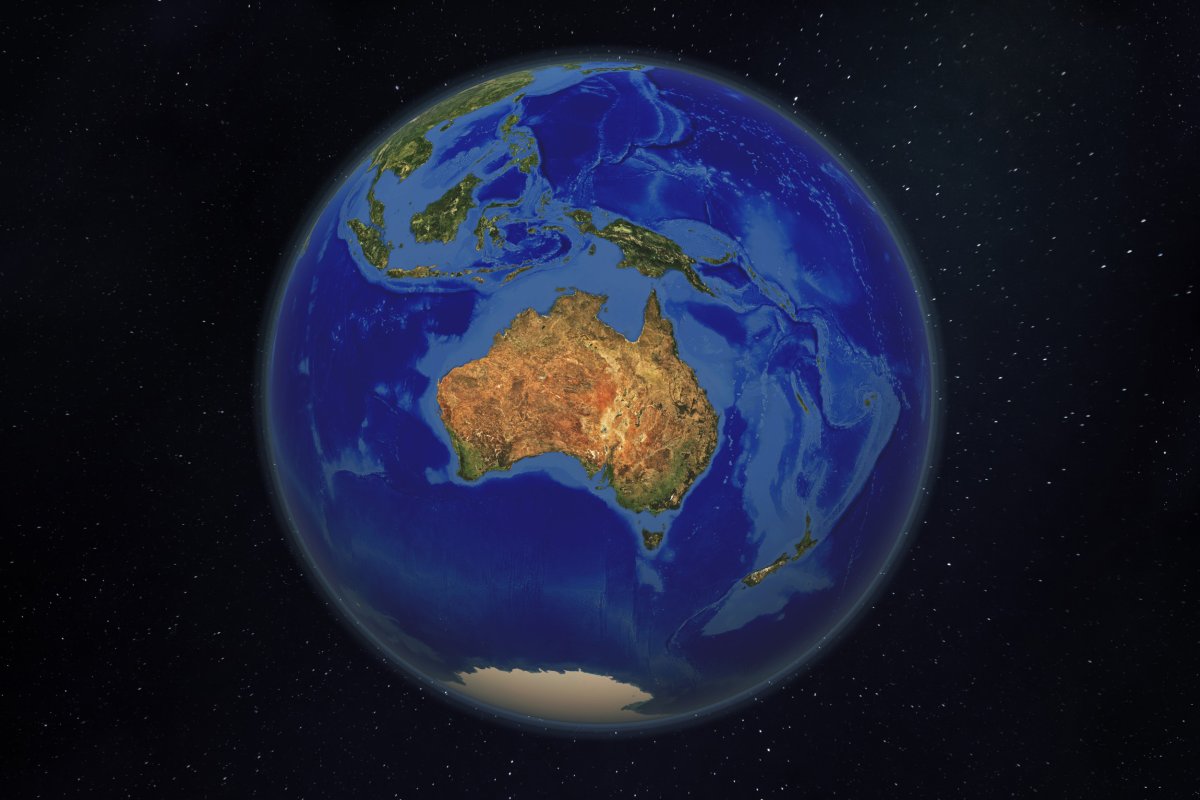
Earth’s oceans, known for their deep blue hue, could one day undergo color shifts, say scientists.
A report based on a study published in Nature suggests that our oceans have not always been blue, and depending on atmospheric and chemical changes, they could one day appear green, red, or even purple.
Why It Matters
The oceans’ color serves as a visual indicator of the planet’s chemical and biological state. According to scientists, changes in oceans’ hue over time reflect major shifts in the Earth’s atmosphere and lifeforms.
Understanding these changes provides insight into the history of the planet’s climate and life, and may also help researchers in identifying biosignatures on distant planets.

maps4media via Getty Images
What To Know
Research, conducted by Japanese scientists and published in Nature used simulations to explore how ocean coloration has varied across Earth’s history.
Their study’s models suggest that in low-oxygen conditions like those billions of years ago during the period when life on Earth was likely still in its infancy, known as The Archean Eon, oceans could have appeared green.
Early photosynthetic organisms eventually triggered what scientists call the Great Oxidation Event—an ecological turning point that introduced significant levels of oxygen into Earth’s oceans and atmosphere, likely paving the way for complex life.
Evidence of this transformation is preserved in banded iron formations, where alternating layers of iron deposited under low-oxygen conditions and oxidized red iron mark the planet’s shifting chemistry.
Citing the Japanese study in Nature, an article in The Conversation suggested that given the study’s emphasis on the relationship between water chemistry and the color of the ocean, it is plausible to envision oceans of different hues in the future.
Elevated sulfur levels—potentially triggered by intense volcanic activity and low atmospheric oxygen—could foster the growth of purple sulfur bacteria, resulting in purple oceans, it said.
Similarly, red oceans could emerge under hot, tropical climates where iron from weathered rocks oxidizes and is transported to the sea, or through the proliferation of red algae associated with nutrient pollution, particularly from nitrogen-rich runoff near coastal areas.
According to the article, as the sun ages and becomes brighter, increased evaporation and ultraviolet radiation may further encourage the spread of anaerobic, pigment-producing microbes. These shifts could gradually replace the deep blue hues of today’s oceans with purples, browns, and greens, especially in coastal or stratified waters.
What People Are Saying
The original Nature report read: “Our findings highlight the co-evolutionary relationship between oxygenic phototrophs and light environments that defined the aquatic landscape of the Archaean Earth and envision the green color as a sign of the distinct evolutionary stage of inhabited planets.”
According to The Conversation: “The lesson from the recent Japanese paper is that the color of our oceans are linked to water chemistry and the influence of life. We can imagine different ocean colors without borrowing too much from science fiction…At geological timescales nothing is permanent and changes in the color of our oceans are therefore inevitable.”
What Happens Next
These insights could support efforts to identify habitable worlds beyond Earth. The color of oceans—and the light they reflect—may serve as a detectable sign of biological activity.




